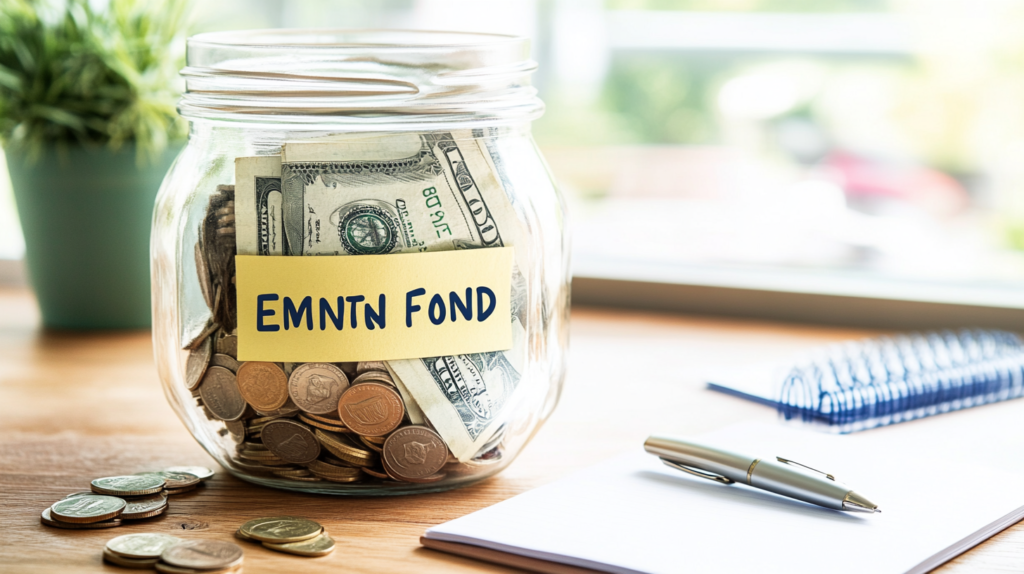
An emergency fund is a financial safety net that provides peace of mind and protection against unexpected expenses. Starting with a $1000 emergency fund is an excellent first goal, especially if you’re new to saving. This guide will show you how to create and maintain your $1000 emergency fund quickly and effectively.
Why a $1000 Emergency Fund Matters
Life is unpredictable, and emergencies like car repairs, medical bills, or sudden job loss can strike at any time. A $1000 emergency fund acts as a buffer, preventing you from relying on credit cards or loans to cover unexpected costs. According to financial experts, having even a small fund can reduce stress and set you on the path to financial stability.
Step 1: Define What Constitutes an Emergency
Before you begin saving, it’s essential to understand what qualifies as an emergency. Examples include:
- Unexpected medical expenses.
- Car repairs or breakdowns.
- Urgent home repairs.
- Unanticipated travel for family emergencies.
Avoid dipping into your emergency fund for non-essentials like vacations or shopping sprees.
Step 2: Set Up a Dedicated Savings Account
Keeping your emergency fund separate from your regular checking account reduces the temptation to spend it. Consider opening a high-yield savings account to earn some interest while your money sits untouched.
Step 3: Start Saving Incrementally
Building an emergency fund doesn’t happen overnight. Break it down into manageable steps:
- Set a timeline: Aim to save $1000 within 3-6 months.
- Automate savings: Schedule regular transfers from your checking account to your savings account.
- Start small: Even $10 or $20 per week can add up quickly.
Step 4: Cut Costs to Boost Savings
Evaluate your current expenses and identify areas where you can cut back. Some ideas include:
- Reduce dining out: Cook meals at home to save hundreds per month.
- Cancel unnecessary subscriptions: Pause services you don’t use regularly.
- Shop smarter: Use coupons, cash-back apps, and buy only essentials.
Step 5: Find Additional Income Sources
If cutting costs isn’t enough, look for ways to increase your income. Options include:
- Side gigs: Freelancing, pet sitting, or driving for rideshare companies.
- Sell items: Declutter your home and sell unused items online.
- Monetize skills: Offer tutoring, graphic design, or other services you’re good at.
Step 6: Use Windfalls Wisely
If you receive unexpected money, like a tax refund, work bonus, or gift, allocate it directly to your emergency fund. This can help you reach your goal faster.
Step 7: Stay Committed to Your Goal
Consistency is key. Avoid using your emergency fund unless absolutely necessary, and continue contributing until you hit the $1000 milestone.
Maintaining Your Emergency Fund
Once you’ve saved $1000, aim to replenish it immediately if you need to use it. As your financial situation improves, consider expanding your fund to cover 3-6 months of living expenses.
Real-Life Example: How Mark Built His Emergency Fund
Mark, a 30-year-old graphic designer, wanted to save $1000 for emergencies. He followed these steps:
- Set a timeline: He aimed to save $1000 in 4 months.
- Cut costs: Mark reduced his streaming subscriptions and eating out, saving $150/month.
- Earned extra: He freelanced on weekends, earning an additional $200 per month.
- Automated savings: Mark set up $125 bi-weekly transfers to his savings account.
Mark reached his goal in just 4 months, proving that small, consistent efforts can lead to significant results.
Conclusion
Creating a $1000 emergency fund is a crucial step toward financial security. By cutting costs, finding additional income sources, and staying disciplined, you can build your fund quickly and protect yourself from financial stress. Start today and enjoy the peace of mind that comes with being prepared for life’s uncertainties.
